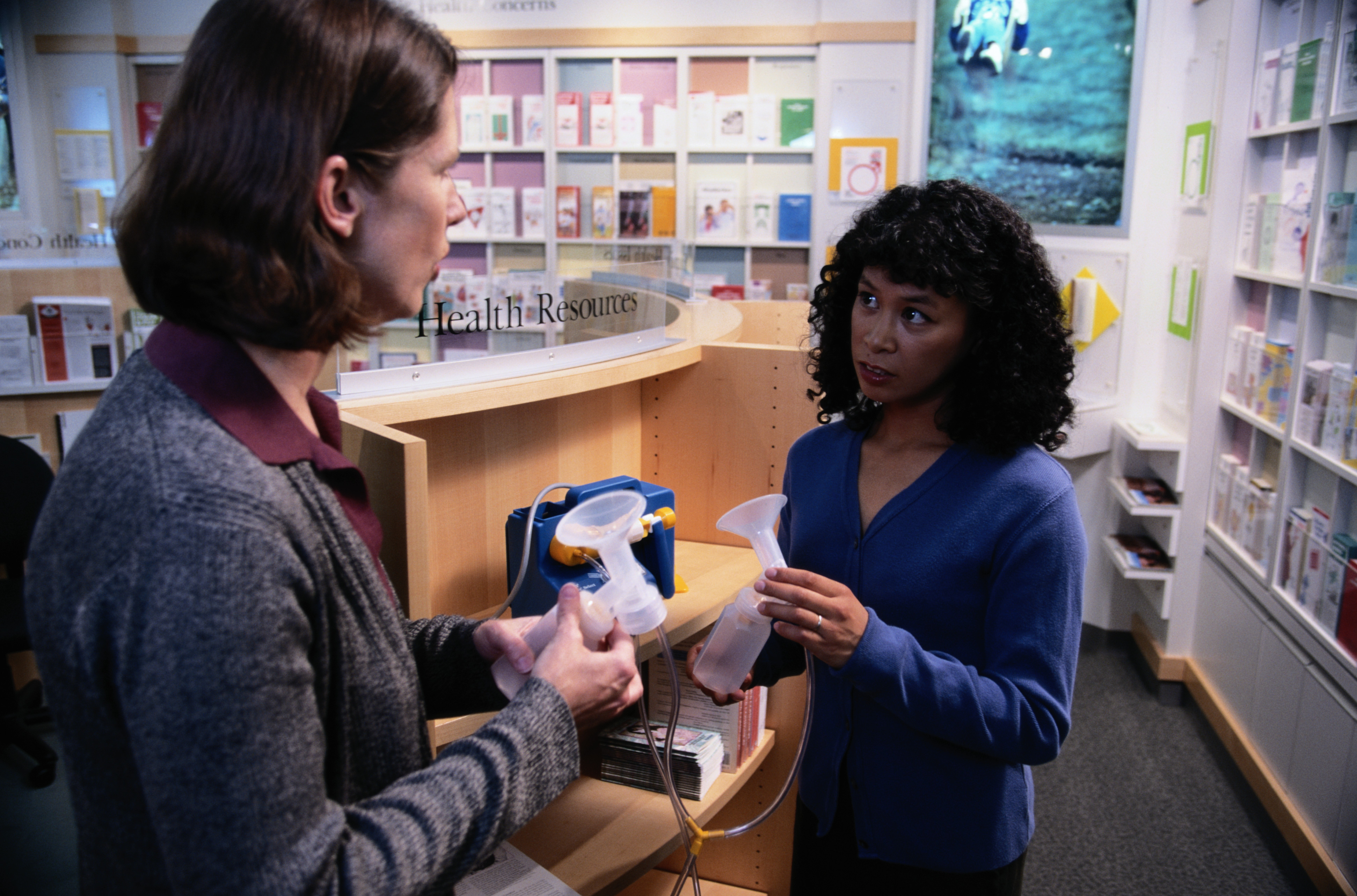Breast Pumps 101: Choosing a Breast Pump
Because of the Affordable Care Act, many plans which provide coverage for a breastpump may not provide a great pump, nor the right kind of pump for your pumping needs. Here’s an overview of what to consider when choosing a breast pump.
In general, pumps made by companies specializing in breastfeeding equipment tend to be more effective and durable than those made by companies also making toys or other infant-feeding equipment or foods. Better brands (First Class) are Medela and Ameda. Although they may cost a bit more to buy, mothers report that these brands generally work better than other, cheaper pumps. They are also covered by a warranty.
Mothers needing to pump once in a while may be able to express milk by hand or using a simple hand pump. This could be to relieve fullness, leave the occasional bottle of milk if you’re away from baby, or pump more often if the baby is also breastfeeding a lot of the time.
Mothers needing to pump daily should invest in a portable electric pump. These pumps express both sides at the same time and are faster. They are better for moms who are away from the baby regularly because they’ve gone back to work or are at school. They plug into a standard outlet. Adaptors for cars are often available, and they can run on batteries if needed.
Mothers with a hospitalized child or a medical condition may need to use a large, hospital-grade breast pump. These are rented from a medical supplier and usually require a prescription from a physician and pre-approval from the health insurance company. Some families also pay for these out-of-pocket as a ‘medical expense’.
Can I just use a pump and not breastfeed?
Some mothers have to rely on a breastpump all of the time, because their baby is unable to breastfeed. Others choose to rely on a pump because they are uncomfortable with the idea of breastfeeding. Regardless of the reason, it takes diligence and determination to maintain a milk supply with a pump.
– Pumps are not as cute and snuggly as your baby. Having a picture of your baby, a blanket or onesie that smells like your baby, or a recording of your baby’s voice, can all help you relax and release milk while pumping.
– Use the strongest pump you can afford. Ideally, this is a hospital-grade rented pump.
– Pump at least 8 times over 24 hours, for at least 15 – 20 minutes per session. In the early weeks, this means pumping at least once during the night.
– Using hand massage can help increase the amount of milk released during pumping and more thoroughly empty the breast each session. This will keep your supply higher.
– Do not get discouraged if you are not filling the bottles when you pump. Few babies have stomachs that can comfortably hold 4 – 6 ounces of milk per feeding. 2 – 3 ounces is more realistic.
Doraine Bailey, MA, IBCLC, is the Breastfeeding Support Services Program Coordinator at the Lexington-Fayette County Health Department. Contact her at 859-288-2348 or at dorainef.bailey@ky.gov.


